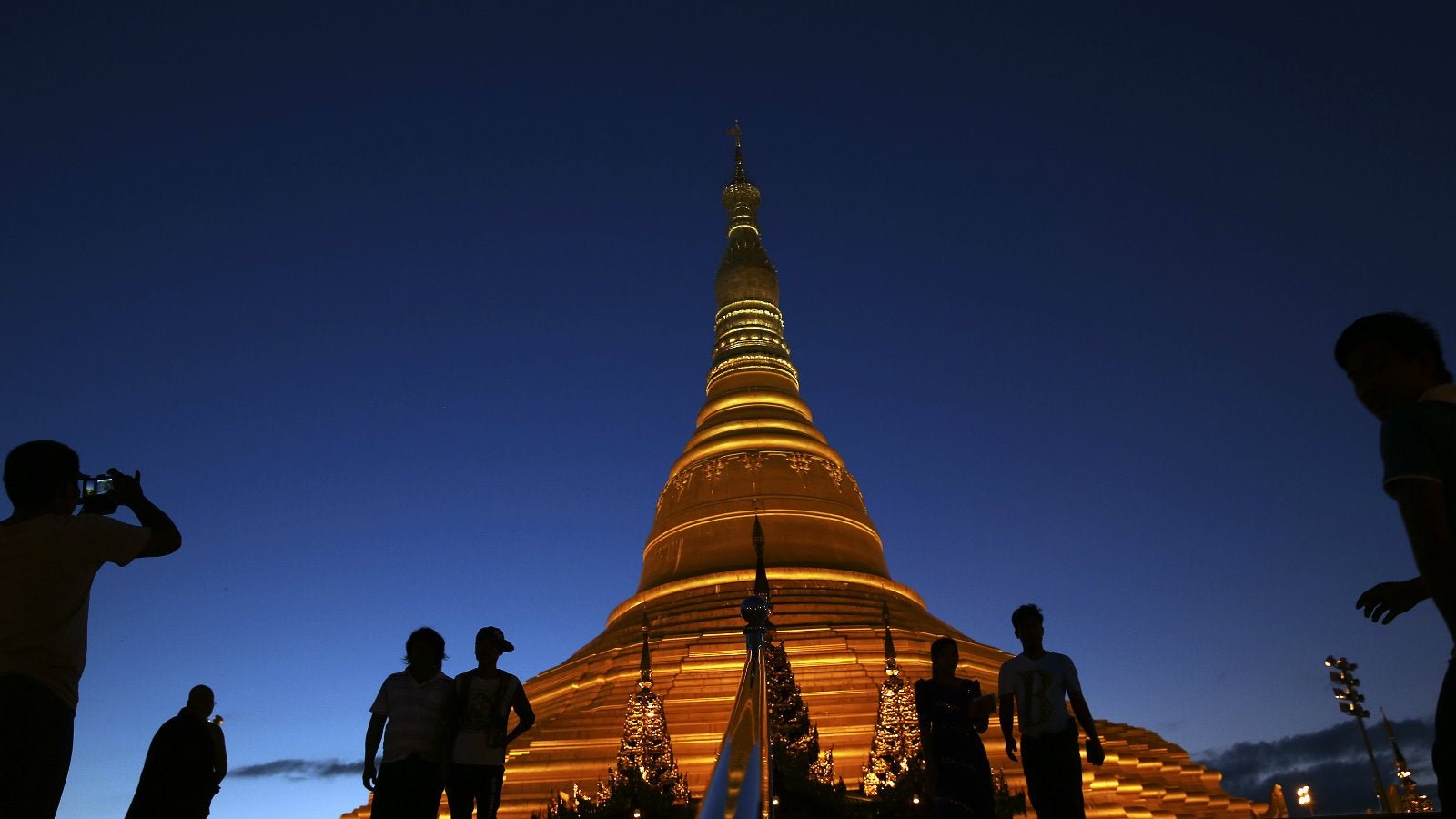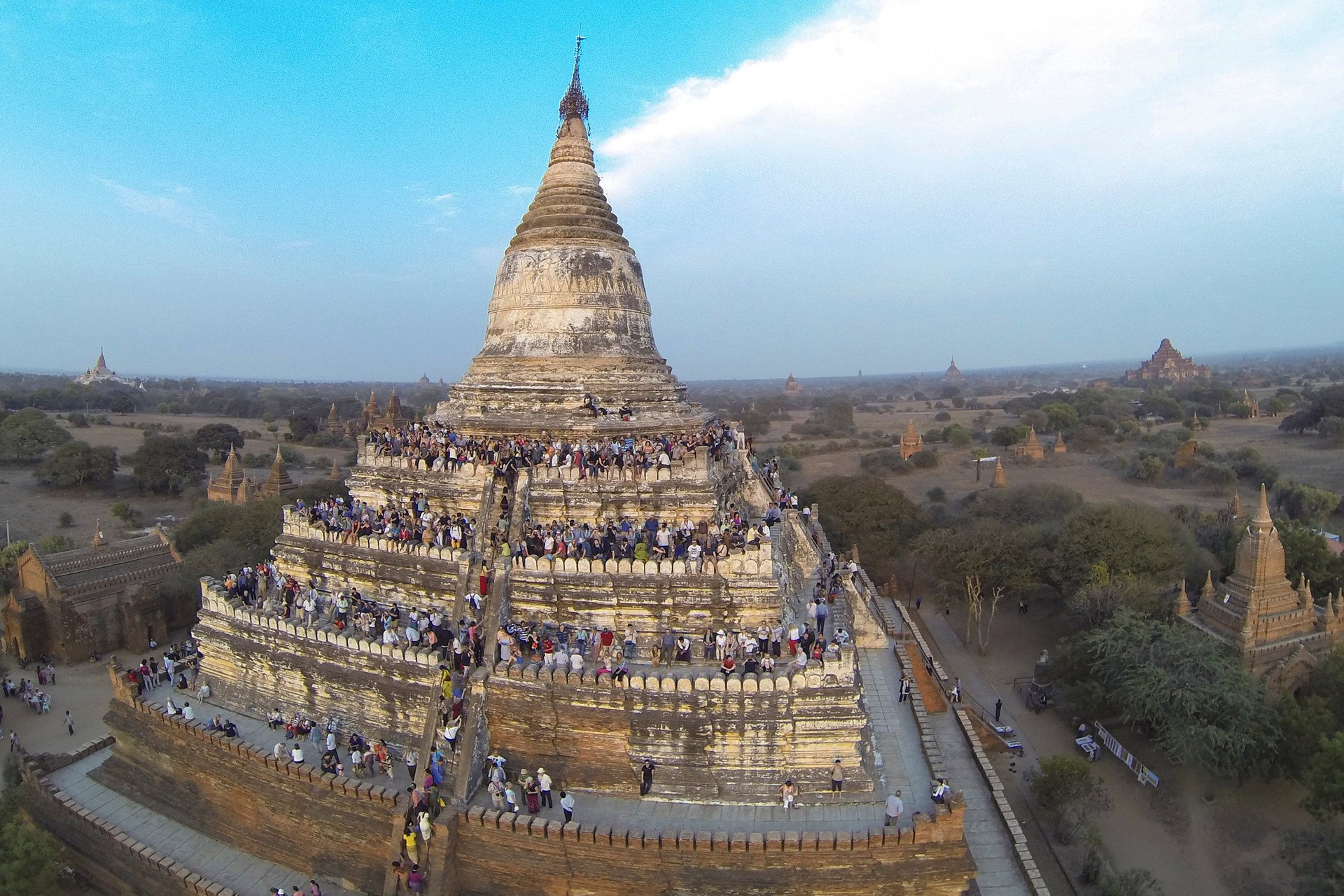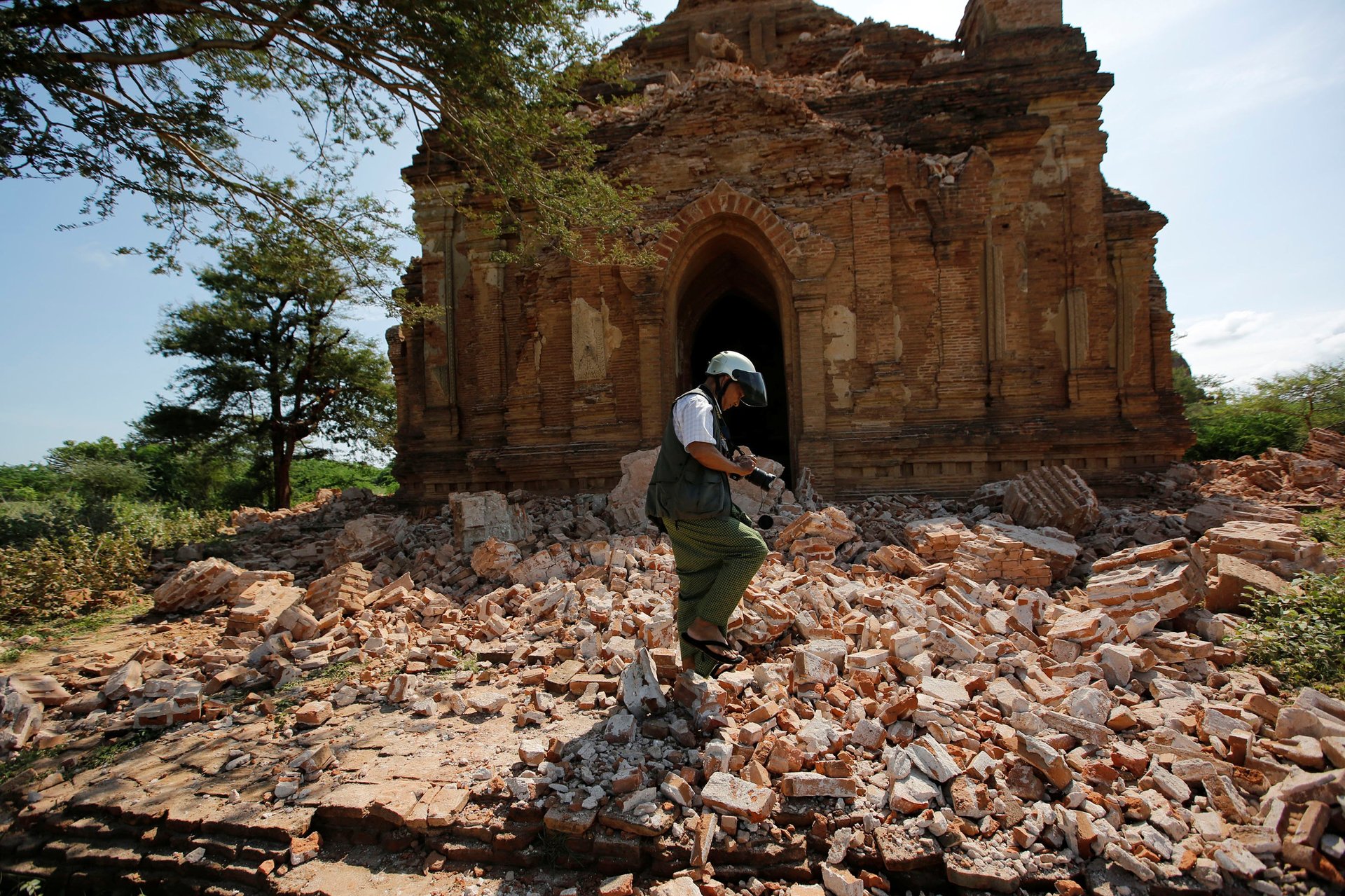Your Instagram-worthy holiday photos are slowly ruining some of Asia’s ancient monuments
Naypyidaw, Myanmar, is one of the strangest capital cities in the world. The city, only a decade old, is a sprawling maze of 20-lane highways, government compounds and pastel condominiums.


Naypyidaw, Myanmar, is one of the strangest capital cities in the world. The city, only a decade old, is a sprawling maze of 20-lane highways, government compounds and pastel condominiums.
One visitor described it as “an eerie picture of post-apocalypse suburban America.” Another was more blunt, calling it “the most awful place you have ever been to.”
In terms of entertainment, there’s not much: a gem museum, several golf courses, a zoo. And looming above all is the city’s most popular attraction, the Uppatasanti Pagoda, which has received four of five stars on one popular travel site, with nearly half of the reviewers calling the attraction “excellent.”
Measuring over 300 feet tall, the gleaming gold pagoda looks like an ancient marvel. But although the Uppatasanti Pagoda is an impressive building—especially when photographed in the evening against a darkening blue sky—the splendor is a façade.
The pagoda is no wonder of the ancient world; it was completed in early 2009, with a portion of the structure reportedly built by children, some as young as seven or eight. And it’s almost an exact replica of the more famous Shwedagon Pagoda, which was built in the country’s former capital, Yangon, in the 14th century.
In truth, Naypyidaw’s crown jewel is only the artificial heart of a spiritually dead city, a crude memorial to the superfluous grandeur of a brutal military regime.
Still … those colors, the contrast, that image. It’s—dare I say—Instagram-worthy.
And since recent research has shown just how important social media content and shared images have become to planning a trip, an important question emerges for those looking to attract visitors to a destination: Has what a place looks like become more important than what a place actually is?
Surface-deep destinations
A few years ago, I traveled to Guyana and Suriname—two small countries in South America and two places I knew virtually nothing about—to conduct research for my book about how the proliferation of guidebook material, including the explosion of information available through social media, has changed the way we see the world.
But last year, as I traveled through Myanmar for a Kindle Single on how the country is adjusting to an influx of visitors and investment, I began to think about the influence of social media not only on the way we travel but also on the places we visit.
While the surface-deep appeal of the Uppatasanti Pagoda suggests my initial hypothesis might be true—that what a place looks like has become more important than what a place actually is—nowhere is this tension more apparent than at Myanmar’s most photographed and most popular tourist destination, Bagan, a vast plain of ancient temples and pagodas located a few hours northwest of Naypyidaw.
On one side of the argument are tourism officials who hope to capitalize on increased travel to Myanmar by turning Bagan into one of the world’s great bucket list destinations. They’ve repaired structures, built hotels and improved access to the region.

On the other side are preservationists and archaeologists who have watched with horror over the past 20 years as hundreds of rundown pagodas, many of which were built between the 11th and 13th centuries, have been swiftly and systematically rebuilt with little regard for their original form. One archaeologist was quoted in 2006 saying, “They are carrying out reconstruction based on complete fantasy… It completely obliterates any historical record of what was there.”
But more pagodas lead to more pictures. And nothing seems to frighten tourism officials quite like a tourist without something to photograph. When Myanmar’s ministry of culture recently banned visitors from climbing on some of the largest structures—thus hindering their access to Bagan’s ubiquitous “sunset photo”—the country’s vice minister for tourism was adamant that the ban would “seriously impact the tourism sector.” While he understood the “need for the long-term conservation of pagodas … the ban should not have been imposed before an alternative viewing location had been put in place.”
Tourism officials won. The ban was rolled back, and the photos continued.
Less than a year later, the issue is being forced once again. An earthquake in August 2016 caused significant damage to nearly 400 of Bagan’s temples, including Shwesandaw Pagoda, the site’s most popular sunset-viewing spot. This time, instead of having tourists climb up crumbling stairs, new solutions are being proposed, including the creation of an elevated viewing area next to a nearby lake.
Save the pagodas, sure. But more importantly, save the photo op.

The influence of social media on travel
Why does this matter?
Tourism scholars have confirmed the influence of social media content—posts on Facebook, Twitter, Instagram, etc.—on a traveler’s pre-trip planning process. This is what media people refer to as “earned media,” free publicity generated by visitors eager to share their experience.
If the message is positive (earned media has the unfortunate tendency to backfire), it’s remarkably effective, elevating the destination’s “brand” in the consumer’s mind. The media research company Nielsen found that people trust “recommendations from people I know” significantly more than editorial content, consumer opinions posted online or, not surprisingly, paid television, newspaper and online ads.
So when someone turns to Facebook or Twitter or Instagram to share memories from their recent vacation (and, say, uses the hashtag #Bagan), the post serves not only as a personal update but also as an effective promotional tool for airlines, hotels and tour companies linked to that particular location.
To take it a step further, many of these researchers specifically cite the influence of visual imagery in social media. Those planning a vacation often browse pictures and video from other people’s trips for inspiration. And there’s certainly no shortage of pictures to choose from. One study found that recent vacationers to Mallorca, Spain, were over twice as likely to share a photo album or video on Facebook than they were to write an online review. They were over four times as likely to post a photo than compose an online blog or diary.
Some of this, of course, can be attributed to the ease by which these networks allow us to share our images: snap, filter, upload, repeat. Recommendations that once took the form of text—“This place is amazing!”—are instead now transmitted through captionless shots of stunning locales.
And as these social networks continue to grow —Facebook has over a billion daily users, Instagram over three hundred million and Snapchat over a hundred million— the world’s collective photo album will only increase. One estimate puts the number of images uploaded to the internet per day on Snapchat, Facebook, Instagram and WhatsApp at nearly three billion. That’s a lot of Machu Picchu.
So what to make of all these pictures? For those in the tourism industry, the implication is clear: Make your destination Instagram-worthy and watch the earned media/visitors pour in.
But for travelers, the implication is more of a warning: Be wary of surface-deep destinations.
This article was originally published on The Conversation. Read the original article. We welcome your comments at [email protected].